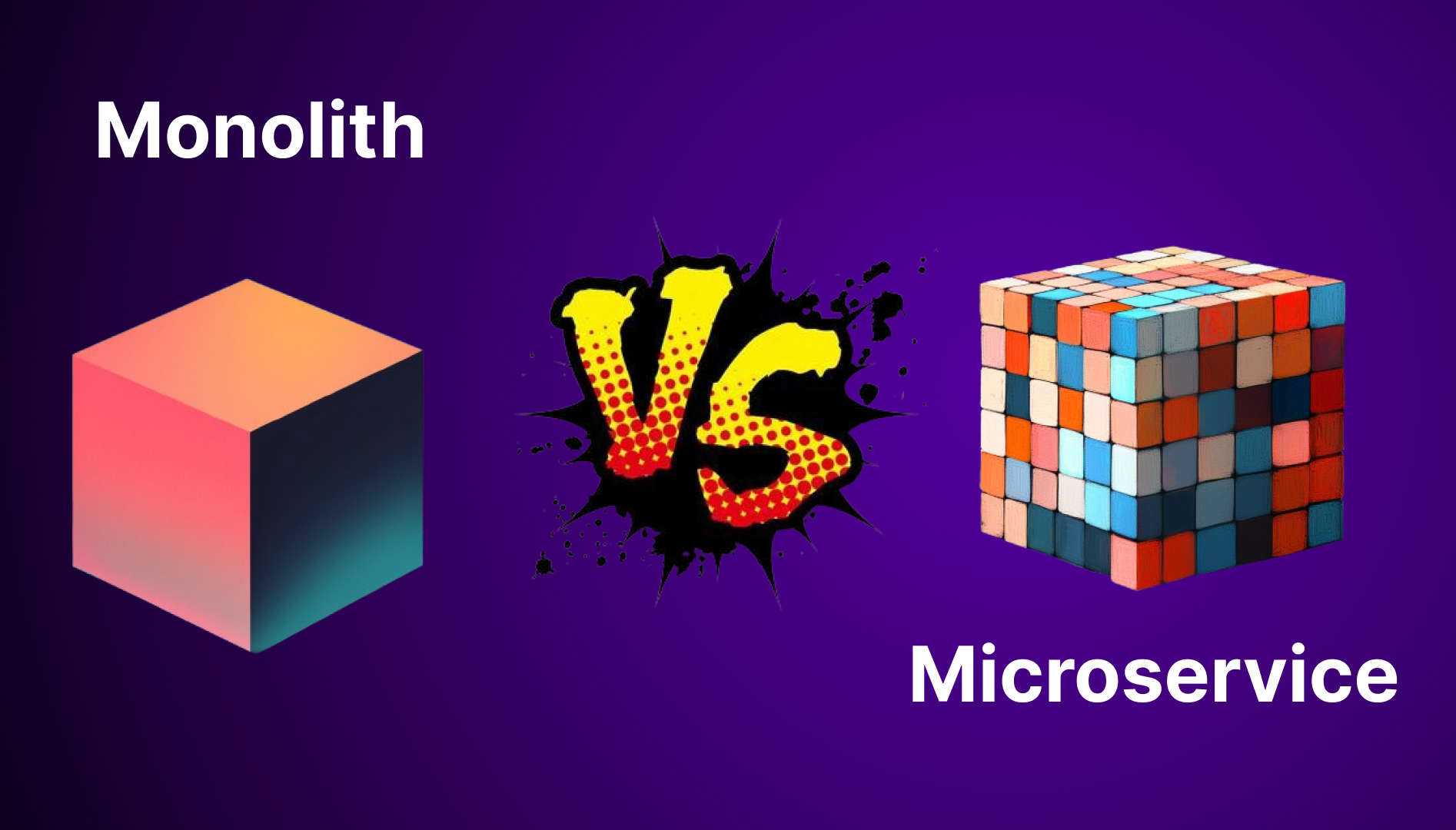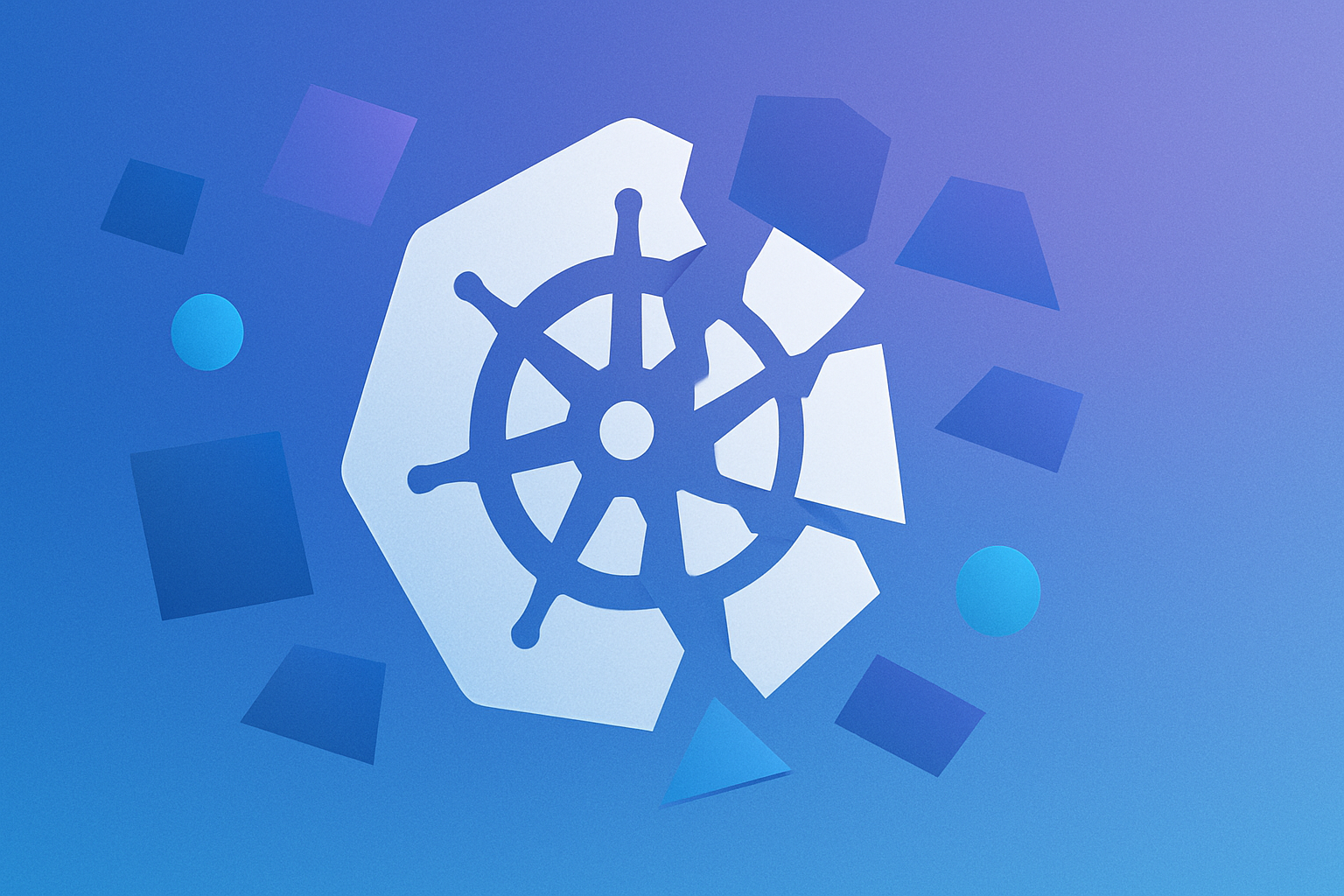In today’s fast-paced software development landscape, selecting the right architecture is crucial. Developers often find themselves debating between two primary options: monoliths vs. microservices. Each has its advantages and disadvantages, making the choice critical for the project's success.
This post aims to explain these monolith vs. microservices architectures, compare their similarities and differences, and guide you in choosing the best fit for your project.
What Is a Monolith?
A monolithic architecture is a unified approach to software development where all components of the application are integrated into a single codebase. These components typically include the user interface, business logic, and data access layers all tightly connected.
Starting with a monolith can be relatively simple. Developers usually work with a single technology stack, making it easier to manage and build. Since the entire application exists as one unit, deploying updates often involves releasing the entire codebase, which can accelerate early development because fewer individual parts need attention.
However, as the application grows, managing the monolith becomes more difficult. Any single change can require extensive testing across the entire system, slowing deployments and complicating development. Debugging also becomes more challenging as the codebase grows.
What Are Microservices?
A microservices architecture divides an application into smaller, independent services. Each service is responsible for a specific function and communicates with other services through APIs. This modular design allows developers to use different technologies and programming languages for each service.
Microservices architecture requires careful planning. Each service must operate independently, meaning APIs need to be created for communication, data storage must be managed separately, and specific protocols for service interaction must be established.
Although microservices increase flexibility and scalability, they also introduce additional complexity. Managing multiple services is more challenging, especially during debugging and deployment. However, microservices offer enhanced agility and allow for continuous development.
Monolith vs. Microservices: Similarities and Differences
Development Approach
A monolithic architecture is built as a single, cohesive codebase. This simplicity can streamline the initial development process, as teams focus on one unified application. However, over time, managing a growing monolithic codebase becomes more complex. Small changes in one part of the system may require testing the entire application, which slows down development and increases the risk of bugs.
On the other hand, microservices divide applications into smaller, independently managed services. This modularity promotes faster development because teams can develop, test, and deploy services independently. However, the tradeoff is that managing multiple services requires effective coordination and communication to ensure proper integration.

Deployment Process
In a monolithic system, deployment usually involves releasing the entire codebase at once. This works well for smaller applications but becomes cumbersome for larger systems. Even minor changes require retesting and redeploying the whole application, increasing downtime and deployment risks.
In contrast, microservices allow the independent deployment of services. This approach reduces downtime and enables faster responses to user feedback. However, it introduces more complexity in the deployment pipeline, requiring robust orchestration tools to manage interactions between various services effectively.
Scalability
Monolithic applications often face challenges in scaling. To scale one component, the entire system may need to be replicated, which can result in inefficient resource use. This leads to higher operational costs and difficulties in adapting to fluctuating demand.
Microservices, however, excel in scalability. Each service can be scaled independently based on its workload. If one service faces heavy traffic, it can be scaled up without affecting others. This targeted scaling improves resource use, reduces costs, and enhances overall performance.
Performance
Monolithic systems can deliver high performance early on due to reduced communication overhead. Since components interact directly within the same system, latency is minimized. However, as the system grows, performance may degrade due to tight coupling and complex dependencies.
Microservices provide flexibility in optimizing performance for each service. However, inter-service communication over a network introduces latency, which can slow the system. Managing API calls efficiently is crucial to maintaining performance. Effective communication protocols and monitoring tools help mitigate performance issues.
Debugging and Monitoring
Debugging in a monolithic architecture can be simpler initially, as all components exist within a single codebase. This centralized setup allows developers to trace issues more easily. However, as the codebase expands, debugging becomes more difficult due to the tightly coupled components.
In microservices, debugging is more complex because issues may arise across multiple independent services. Developers must track problems across the different services, requiring sophisticated monitoring tools. Effective logging and distributed tracing are essential for understanding interactions between services and identifying the root cause of issues.
Cost Considerations
Monolithic systems are typically more cost-effective in the early stages of development. They require less upfront investment in infrastructure and fewer specialized tools. However, as the system grows, maintenance costs increase due to the difficulty of managing a large codebase and scaling the entire system.
Microservices, while initially more expensive, offer long-term savings by optimizing resource allocation. Independent scaling reduces operational costs over time, making it a more cost-efficient option as the application grows.

Advantages and Disadvantages of Monoliths
Advantages
- Simplicity: Monolithic architectures are easier to develop and manage in the early stages. With everything in one codebase, onboarding new developers is faster.
- High initial performance: Monolithic systems perform well in the beginning because components communicate in-memory, reducing communication overhead.
- Streamlined deployment: Deployment is straightforward, as the entire application is released at once. This reduces the complexity of the deployment pipeline.
- Cost-effective: Early development costs are lower because there’s less need for advanced infrastructure and fewer operational complexities.
Disadvantages
- Scalability issues: Monoliths become harder to scale as the application grows, leading to inefficient resource use and higher costs.
- Slower development cycles: Managing a growing codebase slows down development. Even small changes require testing and retesting the entire system.
- Tight coupling: Changes in one component can unintentionally affect others, increasing the risk of introducing bugs.
- Limited technology choices: Monolithic systems are often tied to a single technology stack, making it harder to adopt new tools.
Advantages and Disadvantages of Microservices
Advantages
- Independent scaling: Microservices allow independent scaling of each service, optimizing resource use and reducing costs.
- Technological flexibility: Teams can use different technologies for different services, encouraging innovation and better performance.
- Faster development: Independent services allow for parallel development, speeding up the release of new features.
- Fault isolation: A failure in one service doesn’t affect the entire system, improving reliability and resilience.
Disadvantages
- Increased complexity: Managing multiple services introduces complexity, requiring careful planning and coordination.
- Higher initial costs: Microservices often need advanced tools like Docker or Kubernetes, leading to higher upfront infrastructure costs.
- Communication overhead: The reliance on network communication between services can introduce latency, affecting performance.
- Complex debugging: Tracking down problems across services is more challenging, requiring investment in sophisticated monitoring tools.
How to Choose Between Monolith vs. Microservices
1. Project Size and Complexity
For small or medium-sized applications, a monolithic architecture may be the best option. It allows for quick development and easy management. For example, startups often choose a monolith when building an MVP. As the system grows and becomes more complex, switching to microservices can help manage the increased complexity.
2. Team Structure
Consider the team size and expertise. Small teams may prefer a monolithic approach, as it fosters collaboration by focusing on a single codebase. Larger teams, however, benefit from microservices, allowing them to work on independent services simultaneously. For example, companies like Netflix have used microservices to leverage specialized teams.
3. Future Growth
If your application is expected to scale rapidly, microservices may be the better choice. Independent scaling allows each service to grow without impacting others, making it easier to handle fluctuating traffic. Companies like Uber transitioned to microservices to manage explosive growth.
4. Performance Needs
Consider the performance requirements of your application. Monoliths offer faster initial performance due to in-memory communication. However, microservices are more efficient in the long run because they allow for optimized resource allocation and scaling.
5. Resource Availability
Microservices require more specialized skills and resources. If your team is well-versed in cloud technologies and containerization, microservices may be a good fit. However, if the team has more experience with traditional models, a monolithic approach might be easier to implement.
Conclusion: Monolith vs. Microservices
In conclusion, both monoliths and microservices offer unique advantages and challenges. Understanding these will help you make informed decisions based on your project’s needs. As noted in the article "Monoliths Will Make a Comeback," the choice between these architectures isn't straightforward. Monolith vs. Microservices? Each has its place in the software development landscape.
For more insights, check out a detailed discussion on microservices vs. containers. Understanding these distinctions can guide you in creating a more robust and scalable application.
This post was written by Deboshree Banerjee. Deboshree is a backend software engineer with a love for all things reading and writing. She finds distributed systems extremely fascinating and thus her love for technology never ceases.








